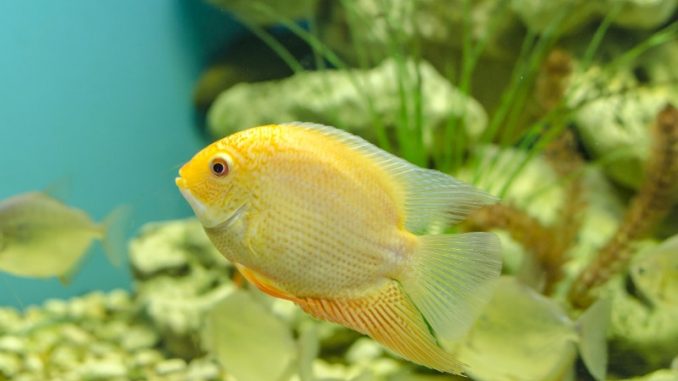
The severum cichlid is a tropical freshwater fish from the cichlid family that is native to South America.
There are five types of severum cichlids found in the wild, and other color variations bred in captivity. When aquarists say “severum cichlid,” they typically mean the Heros severus, which is the most common type of severum cichlid, and is also known as the banded cichlid.
These severum cichlids have compressed bodies and pointed anal and dorsal fins. Their bodies are gold, and their tails and fins are a soft yellow color with a white base. Some fish have dark horizontal stripes running down their bodies.
Some severum cichlids are suitable for community tanks, whereas others are antisocial and will fight other tankmates. Although severum cichlids are aggressive, they’re increasing in popularity among hobbyists due to the fish’s unique appearance and feisty personality.
TABLE OF CONTENTS
Severum Cichlid Facts & Overview
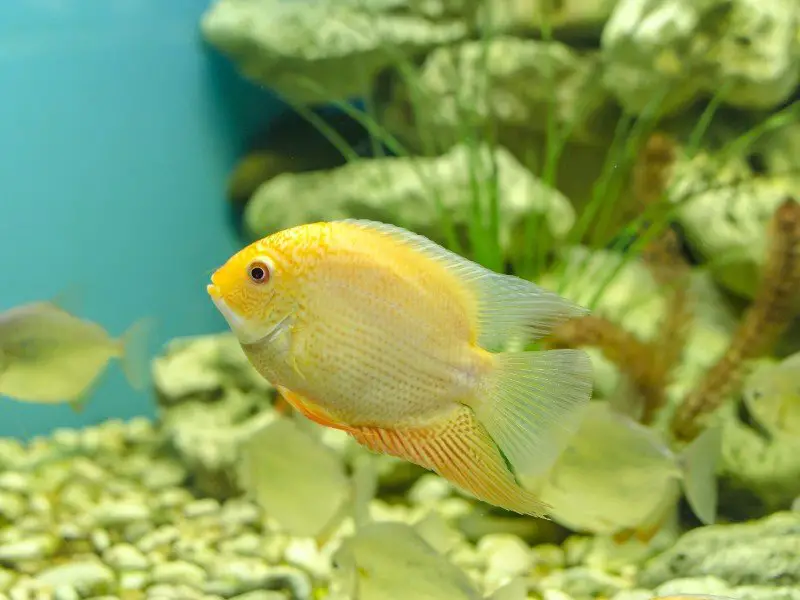
| Category | Rating |
| Care Level | Moderate |
| Temperament | Aggressive |
| Color | Gold, yellow, orange, and striped |
| Lifespan | ~5 to 10 years |
| Size | ~7.5 inches |
| Diet | Carnivore |
| Family | Cichlidae |
| Minimum Tank Size | 45 gallons |
| Tank Setup | Freshwater, plants, sand substrate |
| Compatibility | Smaller fish species |
The severum cichlid (Heros severus, previously known as Cichlasoma severum) is native to the upper Orinoco and upper Rio Negro basins in South America. These fish are found in slow-flowing and highly vegetated water containing underwater trees and plants, and eat fruit and other vegetation that falls into or grows in the water.
Mimicking the fishs’ natural habitat in an aquarium setup is important for the severum cichlids’ health and wellbeing. Their tanks should be decorated with suitable plants and accessories and must contain water with appropriate parameters. Physical and mental health contributes to the fishs’ lifespan, so stressed fish will die young.
Severum cichlids are rare fish and hard to find in pet stores, but are easier to find online. Prices range from $7.99 to $12 per fish.
Appearance & Behavior
Severum cichlids grow up to 7.5 inches long. There are five species of severum cichlids, the Heros severus, Heros efasciatus, Heros liberifer, Heros notatus, and Heros spurius, all of which look different from one another.
Heros severus are the most popular fish and the easiest to purchase for home aquariums. Here is an overview of each severum cichlids appearance and behavioral traits:
- Heros severus — the most common severum cichlid species, which has a yellow/gold hue with a flat body and pointed dorsal fins and tail. This fish is semi-aggressive.
- Heros efasciatus — displays horizontal black stripes, blue fins and tail, and red/orange accents. This species has the classic compressed severum body shape.
- Heros liberifer — has a white base and glistens red/orange. The fish displays prominent horizontal black stripes down its body. The Heros liberifer has aggressive tendencies.
- Heros notatus — also known as the spotted severum. This species displays small spots all over its body, fins, and tail. This species comes in various colors, such as purple, orange, green, and yellow.
- Heros spurius — Pale with spots and stripes all over the fish’s body, fins, and tail. Mature fish will grow up to seven inches long.
Stressed fish will look dull and lethargic. Changes in color can indicate health issues, emotional distress, or unsuitable tank conditions.
Males are bigger than females, which is common for these fish. Male fish also display markings on their gills, whereas females have smooth gills. Females have rounded fins, and males develop extensions on their dorsal fins, making the fins look pointed.
Typical Behavior
Severum cichlids are semi-aggressive by nature. They become territorial and display aggressive tendencies before and during breeding. Most cichlids are hard to pair with other fish species, and because of this, severum cichlids should only share a tank with non-aggressive fish that are of similar size.
Severum cichlids spend most of their time swimming near the top of the tank. However, they will explore other areas of the aquarium. Severums will dig in the substrate and nibble at plants and fish that get in their way.
Severum cichlids need plenty of hiding places. These fish will benefit from live plants, caves, and castle accessories in the aquarium to ensure the fish have places to hide when feeling threatened.
These fish are active during the day, so you should feed them twice during the day to ensure they eat well and that their rest period stays undisturbed.
Severum cichlids often gasp for air at the surface when oxygen levels in the tank are low. Low oxygen levels cause severe distress and can be fatal for severum cichlids.
Severum Cichlid Care
The severum cichlid has moderate care difficulty. A confident beginner aquarist can care for this cichlid species, but you should only keep this fish if you have a lot of time.
Severum cichlids have unique personalities, so vigilant fishkeepers will notice each fish displaying different habits. When more than one fish lives in a tank, it’s easy to tell them apart.
Aquascaping the aquarium correctly is crucial for ensuring the fish stays happy and healthy. The severum cichlid lives in murky, slow-moving water in the wild, so keeping the lighting low and the water parameters stable will ensure the fish lives to its full potential.
Wild severums eat crustaceans, small bugs, and plants in their natural habitat. You should feed severums a balanced diet of fish food flakes, live or frozen food, and fish food pellets to ensure the fish eat a balanced diet.
Captive-bred severum cichlids are prone to common aquarium diseases like ich. Performing regular water changes and maintaining hygiene is the best ich treatment. Most aquarium diseases are preventable and easy to treat.
Habitat and Tank Requirements
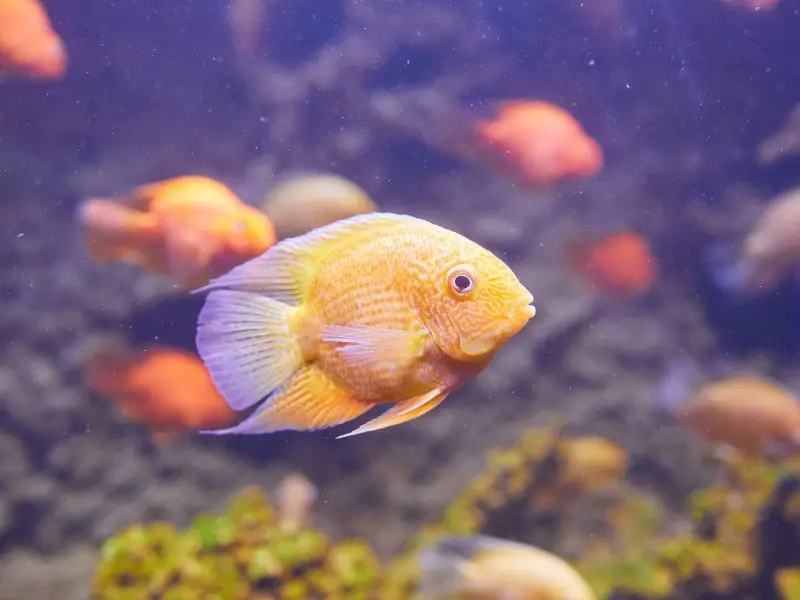
The severum cichlid is native to South America. This fish should live in a freshwater tank that mimics the fish’s natural tropical freshwater environment.
Here is an overview of the severum cichlid’s natural environment:
- Slow-moving rivers — The severum cichlid thrives best in slow-moving water. You should keep the tank water stagnant or slow-moving to prevent stressing the fish.
- Natural plants and underwater trees — Wild severum cichlids live in highly vegetated water. These fish are used to having plenty of hiding spaces to rest in and an abundance of plants to eat.
- Insects and crustaceans — Severum cichlids enjoy a balanced diet of plants and live food in the wild.
The severum cichlid swims in water that is low in oxygen. A fish living in water with low oxygen levels will surface for air, which is a habit that you will observe in a home aquarium.
Cichlids will live a long and happy life as long as they have sufficient hiding spaces and room to swim. Keeping cichlids in a small tank with few accessories and live plants will lead to sickness and depression.
Tank Conditions
Severum cichlids have specific tank requirements. Ensure the tank conditions stay within the following limits to keep the fish healthy:
Water Type
Severum cichlids require fresh water in a home aquarium. Aquarists can use tap water that has been sitting for a few days for a freshwater tank — leaving tap water to sit for a day or so neutralizes the chemicals in the water.
However, aquarists can also add water neutralizers to tap water if time is of the essence.
Tank Size
A 45-gallon tank is the smallest recommended tank size for the species. A single severum cichlid can live happily in a 45-gallon tank. You should add another 50 gallons for every severum cichlid that is introduced to the tank, so a pair of severums should swim happily in a 100-gallon tank or larger.
Water Temperatures
A water temperature 73°F to 84°F is ideal for severum cichlids. The fish can tolerate a wide range of temperatures, but fluctuating temperatures will cause sickness and distress. You should check the temperature daily to ensure it stays constant.
Substrate
Fine sand substrates are perfect for severums. These fish dig up the substrate when they want to hide from other fish or rest. Ensure the substrate is soft and fine to avoid damaging their delicate fins.
Decorations
Live plants, driftwood, and caves are important features in severum cichlid tanks. Look for plants that will not damage the fish and flow well in the water. These fish hide between plants and often brush up against the leaves. Sharp foliage will cause injuries to the fish.
Caves and driftwood accents have an aesthetic quality in home aquariums. Caves, castles, and other accessories are comforting, and keep aquariums looking wild.
Water pH
Severum cichlids thrive when the water pH level is 6.0–6.5. Slightly acidic water will support the fish’s needs and life processes.
Filters and Bubblers
Filters keep the water clean and help in preventing diseases. However, you shouldn’t add water bubblers to a severum cichlid tank. The species is a poor swimmer and will not do well in a tank with high water flow.
Tank Mates

Severum cichlids are not suitable tankmates for aggressive or territorial fish. Pair severums with similar-sized passive fish.
Blue gouramis, pearl gouramis, moonlight gouramis, and kissing gouramis are the best tankmates for severum cichlids. Small gourami species such as the dwarf gourami and the honey gourami are not suitable tankmates for cichlids as they are small and become targets for bullying.
Disease
Severum cichlids are prone to catching infections and diseases. Hexamita infections are common conditions that occur when the oxygen levels in the water are low. Low oxygen levels and high nitrate levels can be fatal. You can avoid this by performing regular water changes.
Fungal infections such as fin rot and white mouth are also common in severum cichlid tanks. These conditions will go away on their own with regular water changes, but some severe cases will require medical treatment.
Diet and Feeding
Feed severum cichlids a balanced diet consisting of live or freeze-dried food and fish food flakes. Freeze-dried food options are a good snack for severum cichlids, whereas live bloodworms are ideal meals. Fish food flakes should make up the cichlids main diet, and the fish should eat live food two or three times per week.
Severum cichlids will eat all of the food in their tank, so limiting their meal times is advised. Mealtimes should last between two or three minutes to avoid overeating.
Breeding
Severum cichlids breed in pairs. Aquarists interested in breeding severums should purchase six or eight juvenile fish and allow pairs to form naturally. You should notice pairs forming within six months.
Follow the steps below to breed severum cichlids successfully.
- Purchase juvenile fish in pairs — Severum cichlids form emotional connections, so encourage pairs at a young age.
- Leave the pairs to connect — Connections must happen naturally. Be patient with the fish and ensure an equal number of females and males are in the tank.
- Ensure the tank is suitable — Severum cichlids have specific tank requirements. The fish will only breed if the water condition is precise.
- Decorate the tank — Ensure the tank is decorated with plants and hiding places for the fish. Severum cichlids need to feel comfortable and healthy to breed successfully.
Eggs will hatch within a week, and both parent fish will care for the fry. You can crush fish food flakes and feed them to the fry. Do this until the fry are big enough to eat specialized fry food.
Should You Get a Severum Cichlid for Your Aquarium?
Severum cichlids are good fish to keep in a large freshwater aquarium. You should think about the tank size, tank mates, and how much time you have to care for the fish before committing to keeping severums.
These fish are active yet shy, which makes them interesting to observe. Severums are healthy fish with long lifespans, so aquarists who have time to care for the fish will enjoy keeping them in community tanks or on their own.

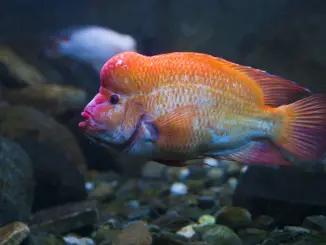
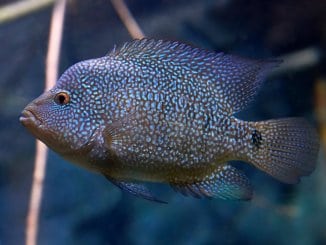
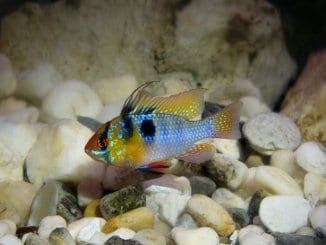
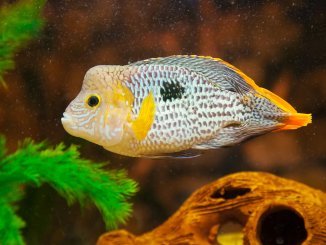
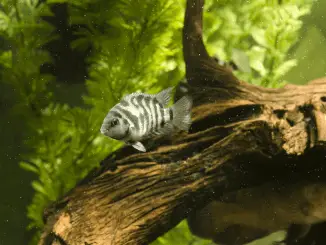
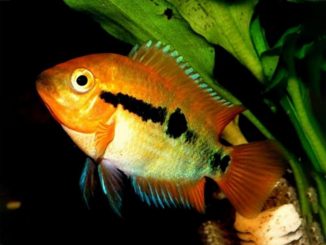
Be the first to comment